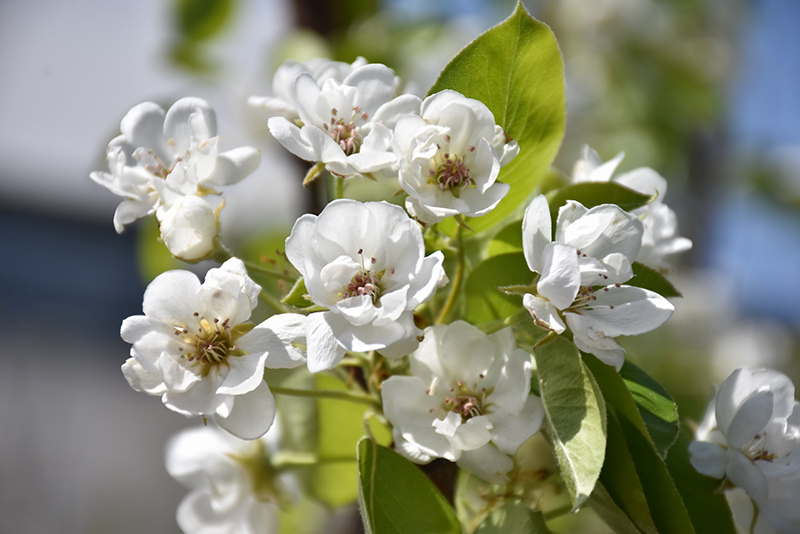Digging deeperPlant Library
Height: 12 feet
Spread: 18 feet
Sunlight:
![]()
Hardiness Zone: 4
Other Names: Common Pear
Description:
A compact and hardy pear, this University of Minnesota introduction produces tasty medium-sized reddish-brown fruit in late summer on an upright and vigorous plant, showy white flowers in spring; a great choice for the home orchard
Edible Qualities
Parker Pear is a small tree that is typically grown for its edible qualities. It produces antique red oblong pears (which are botanically known as 'pomes') with white flesh which are usually ready for picking from late summer to early fall. The pears have a sweet taste and a crisp texture.
The pears are most often used in the following ways:
- Fresh Eating
- Cooking
- Baking
- Preserves
- Canning
Features & Attributes
Parker Pear is blanketed in stunning clusters of white flowers with purple anthers along the branches in early spring before the leaves. It has dark green deciduous foliage. The glossy pointy leaves turn an outstanding deep purple in the fall. The fruits are showy antique red pears carried in abundance from mid to late summer. The fruit can be messy if allowed to drop on the lawn or walkways, and may require occasional clean-up.
This is a dense deciduous tree with an upright spreading habit of growth. Its average texture blends into the landscape, but can be balanced by one or two finer or coarser trees or shrubs for an effective composition. This is a high maintenance plant that will require regular care and upkeep, and is best pruned in late winter once the threat of extreme cold has passed. It is a good choice for attracting birds and bees to your yard. Gardeners should be aware of the following characteristic(s) that may warrant special consideration;
- Messy
- Disease
Aside from its primary use as an edible, Parker Pear is sutiable for the following landscape applications;
- Accent
- Orchard/Edible Landscaping
Planting & Growing
Parker Pear will grow to be about 12 feet tall at maturity, with a spread of 18 feet. It has a low canopy with a typical clearance of 3 feet from the ground, and is suitable for planting under power lines. It grows at a fast rate, and under ideal conditions can be expected to live for approximately 30 years. This variety requires a different selection of the same species growing nearby in order to set fruit.
This tree is typically grown in a designated area of the yard because of its mature size and spread. It should only be grown in full sunlight. It does best in average to evenly moist conditions, but will not tolerate standing water. It is not particular as to soil type or pH. It is highly tolerant of urban pollution and will even thrive in inner city environments. This particular variety is an interspecific hybrid.
Important Pruning Information
Pears should only be pruned when dormant to reduce the risk of spreading bacterial infection. Fireblight can be a problem on pears. Please consult our nursery staff for more information on management practices.
A NetPS Plant Finder tool
This Plant Library is for informational purposes only. We may or may not carry the items listed. During many times of the year, we may carry many more plants in our store than are listed in the Plant Library. Please contact us directly at 303-690-4722 or visit our store for current availability and for assistance.

